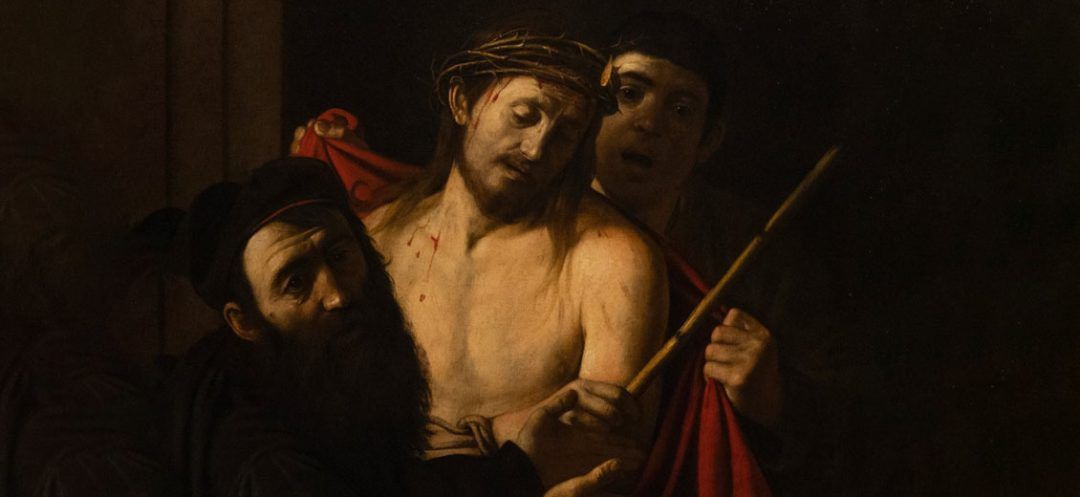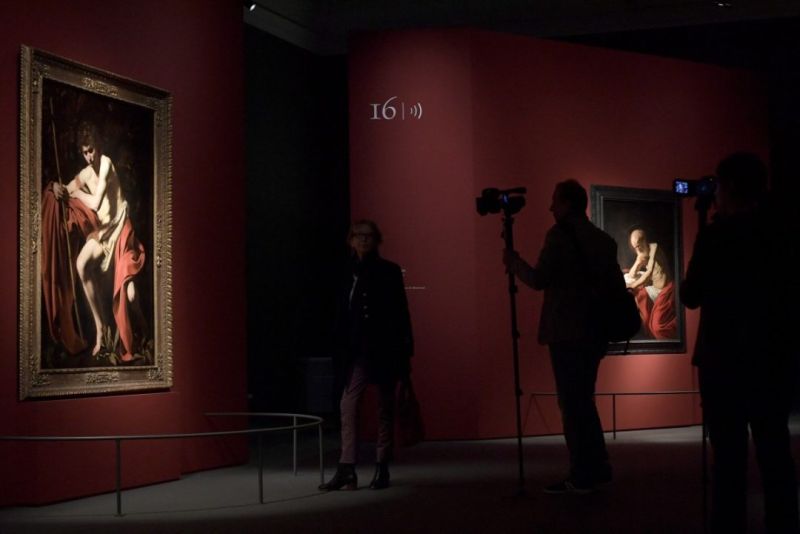
©A painting by Italian master Caravaggio entitled 'Ecce Homo' is pictured at the Prado museum in Madrid - Photo by Pierre-Philippe Marcou/AFP
A long-lost Caravaggio painting, once mistakenly undervalued, has been rediscovered and authenticated, causing a sensation in the art world and beyond.
A painting by the Italian master Caravaggio, previously believed to be the work of an unknown artist, has been unveiled at Madrid’s Prado Museum. The canvas, entitled Ecce Homo, depicts a bloodied Jesus crowned with thorns, presented to the crowd by Pontius Pilate before his crucifixion. The painting, created between 1605 and 1609, is one of only around 60 known works by the Renaissance artist.
 The oil painting on canvas called 'San Giovanni nel deserto' (L) and 'San Girolamo penitente' by Italian Caravaggio- Photo by Miguel Medina/AFP
The oil painting on canvas called 'San Giovanni nel deserto' (L) and 'San Girolamo penitente' by Italian Caravaggio- Photo by Miguel Medina/AFPThe story of the painting’s rediscovery is as fascinating as the artwork itself. Three years ago, a Madrid auction house was preparing to sell the canvas with a starting price of just 1,500 euros, attributing it to an artist from the circle of 17th-century Spanish painter Jose de Ribera. However, mere hours before the auction, the Spanish Culture Ministry intervened, suspecting that the painting might be a genuine Caravaggio. The Prado Museum had already gathered sufficient evidence to suggest that the canvas was indeed the work of the Italian master.
Caravaggio, known for his tumultuous life and groundbreaking chiaroscuro technique, left an indelible mark on the history of art. The confirmation of a new Caravaggio masterpiece is an extraordinary event, as no new work by the artist had been identified for more than 45 years. The Prado’s experts, along with other Caravaggio specialists, were unanimous in their recognition of the painting’s provenance.
The painting’s journey through history is a story in itself. It is believed to have been part of the private collection of Spain’s King Felipe IV in the mid-17th century, before being displayed at the residence of his son, Charles II. The canvas was later bequeathed to the San Fernando Royal Academy of Fine Arts in Madrid, and then passed on to Spanish diplomat and future premier Evaristo Perez de Castro in 1823. After his death, the painting disappeared from public view for nearly two centuries until its surprising resurfacing in April 2021.
The authentication process involved a meticulous examination of the canvas and paint, as well as an analysis of the techniques and styles characteristic of Caravaggio and his era. Maria Cristina Terzaghi, an art history professor from Italy’s Roma Tre University, flew to Madrid to study the painting and was convinced of its authenticity. She cited the head of Christ, the glow of his torso, the color of his cloak, and the three-dimensional nature of the figures as evidence of Caravaggio’s hand.
The painting’s current owner, reported to be a British national living in Spain, purchased the artwork for 36 million euros. While the future of the painting remains in the hands of its owner, it is currently on display at the Prado Museum in a one-piece exhibition called "The Lost Caravaggio." The exhibition, made possible by the owner’s generosity in temporarily lending the work, will run for nine months, allowing the public to marvel at this rediscovered masterpiece.
With AFP
Read more



Comments